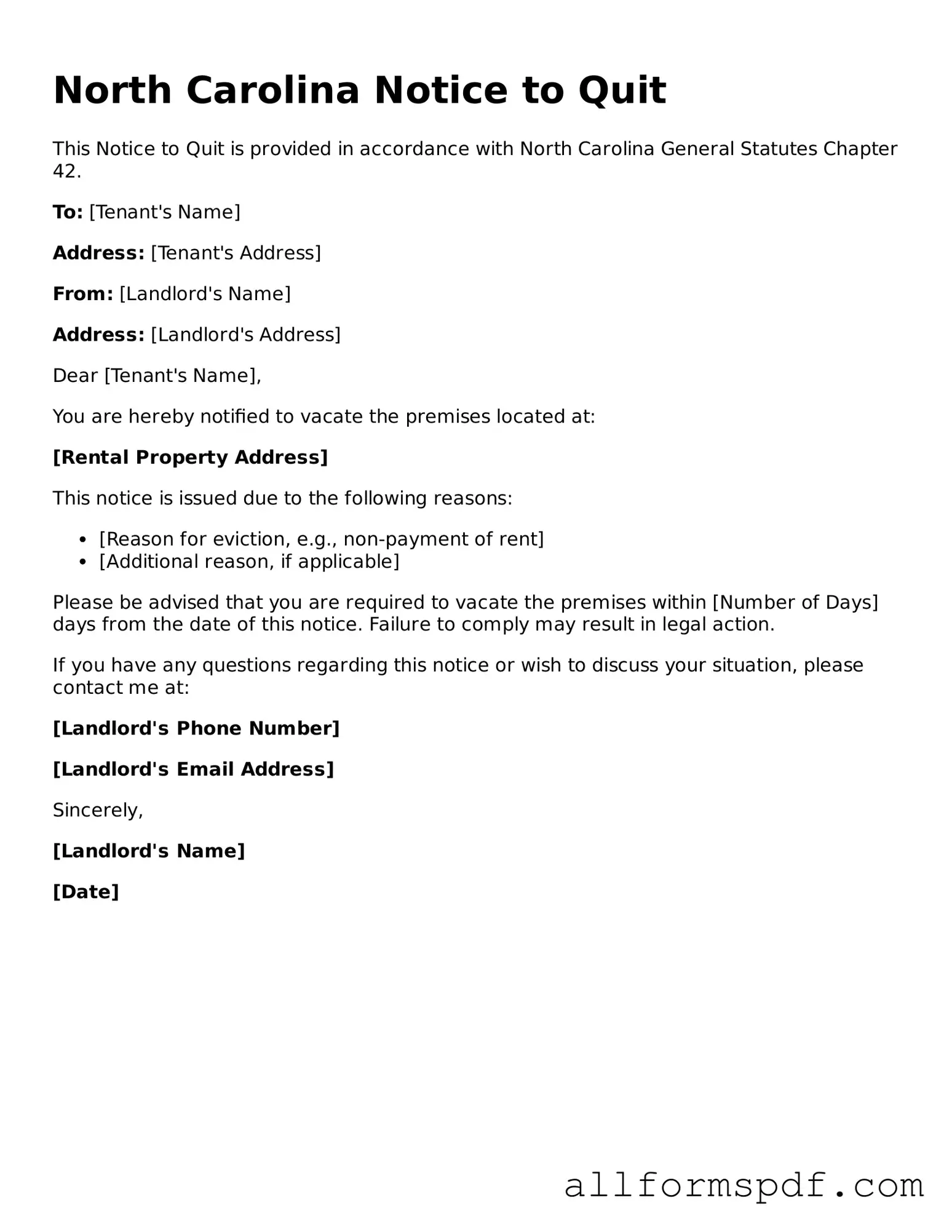Filling out the North Carolina Notice to Quit form can be a straightforward process, but many individuals make common mistakes that can lead to complications. One frequent error is failing to provide the correct date. The notice must clearly indicate when the tenant is expected to vacate the premises. If this date is missing or incorrect, it can cause confusion and potentially delay the eviction process.
Another mistake involves not specifying the reason for the notice. In North Carolina, landlords are required to state the grounds for eviction. Omitting this information can render the notice ineffective. It is essential to be clear and concise about the reason for the notice to ensure the tenant understands the situation.
Many people also forget to sign the form. A Notice to Quit must be signed by the landlord or an authorized representative. Without a signature, the document lacks validity and may be dismissed in court. Therefore, double-checking for a signature is crucial before submitting the notice.
Inaccurate tenant information is another common issue. Landlords should ensure that the tenant's name and address are correct. Any discrepancies can lead to legal challenges and may delay the eviction process. It is advisable to verify this information before completing the form.
Some individuals neglect to keep a copy of the completed Notice to Quit. Having a record of the notice is important for both parties. This documentation can serve as proof of the notice being served, which may be needed in future legal proceedings.
Additionally, people often misjudge the delivery method of the notice. In North Carolina, the notice must be delivered in a specific way, whether by mail or in person. Failing to follow these guidelines can result in the notice being deemed invalid. Understanding the proper delivery methods is essential for compliance.
Another mistake is not adhering to the required notice period. Depending on the reason for eviction, the notice period may vary. Some landlords mistakenly believe that a shorter notice period is acceptable. It is important to follow the legal time frames to avoid complications.
Landlords sometimes include excessive or irrelevant information in the notice. The Notice to Quit should be straightforward and focused on the necessary details. Including unnecessary information can confuse the tenant and detract from the main message.
Lastly, individuals may overlook the importance of consulting local laws. Each jurisdiction may have specific requirements regarding the Notice to Quit. Failing to understand these local regulations can lead to mistakes that could jeopardize the eviction process. It is wise to familiarize oneself with local laws before completing the form.
